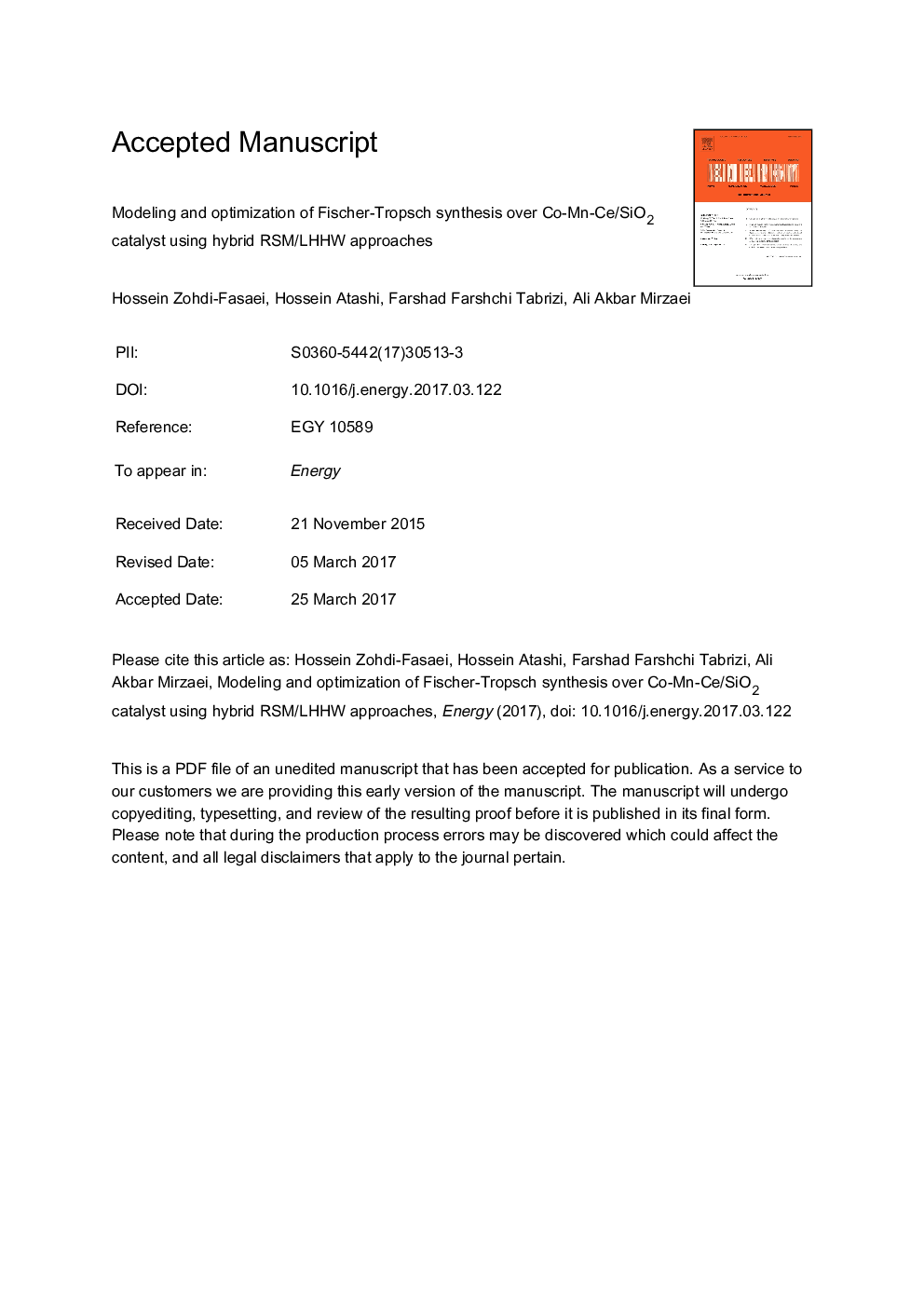| Article ID | Journal | Published Year | Pages | File Type |
|---|---|---|---|---|
| 5476045 | Energy | 2017 | 43 Pages |
Abstract
Operating conditions considerably affect the energy required for Fischer-Tropsch synthesis, depending on the catalyst composition and reactor type (catalyst system). This paper reports the use of cobalt-manganese-cerium supported on silica as a novel CO hydrogenation catalyst, to produce hydrocarbons in a fixed bed micro-reactor. Response surface methodology (RSM) was applied to study the effects of temperature, pressure, feed ratio and their interactions on CO consumption rate, and the selectivity of light olefins (light olefinity), methane and C5+ hydrocarbons. Quadratic mathematical models adequately described the responses in this catalyst system. According to Langmuir Hinshelwood Hougen Watson (LHHW) approach, kinetic mechanism of the reaction was found to be an associative adsorption of H2 and CO. Statistical analysis demonstrated that pressure and feed ratio were the most important factors for the production of C5+ and light alkenes, respectively. Model graphs indicated that minimum methane selectivity was achieved at 523.15 k and 2Â bar. The maximum amounts of light olefins and heavier hydrocarbons were obtained at H2/COÂ =Â 1 and H2/COÂ =Â 2, respectively. Characterization of precursor and calcined catalyst (before and after the reaction) was carried out using SEM and BET techniques.
Related Topics
Physical Sciences and Engineering
Energy
Energy (General)
Authors
Hossein Zohdi-Fasaei, Hossein Atashi, Farshad Farshchi Tabrizi, Ali Akbar Mirzaei,
